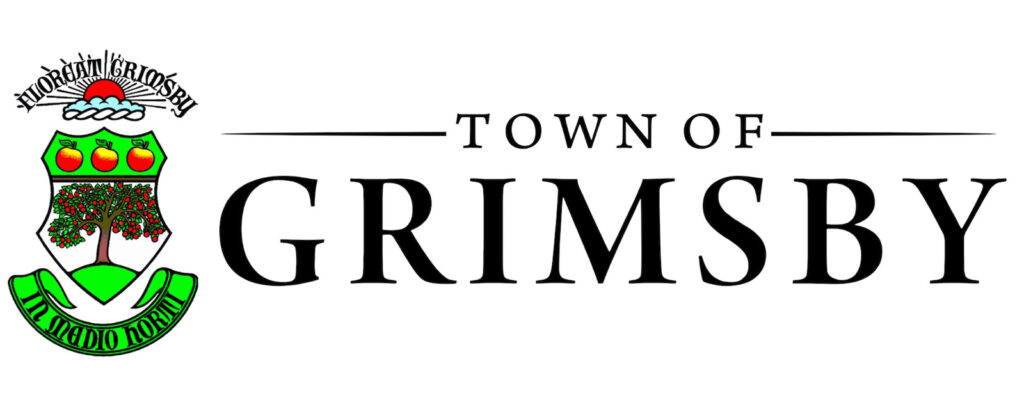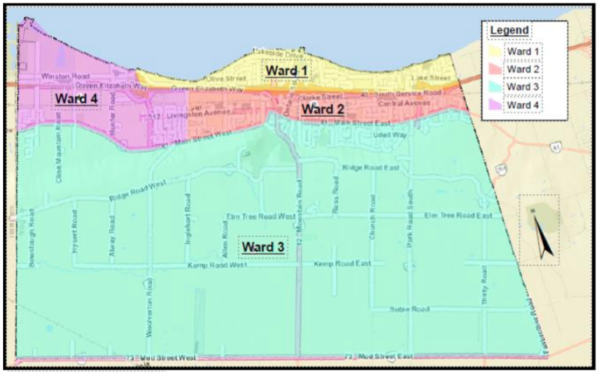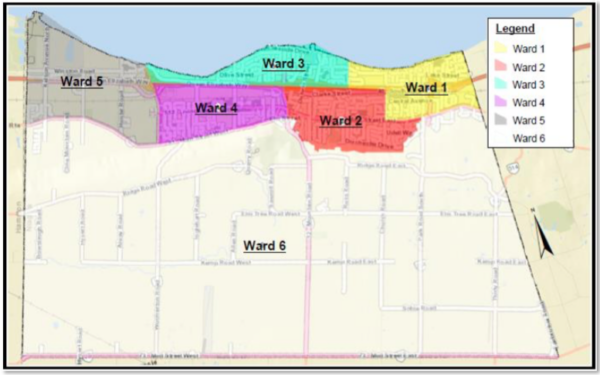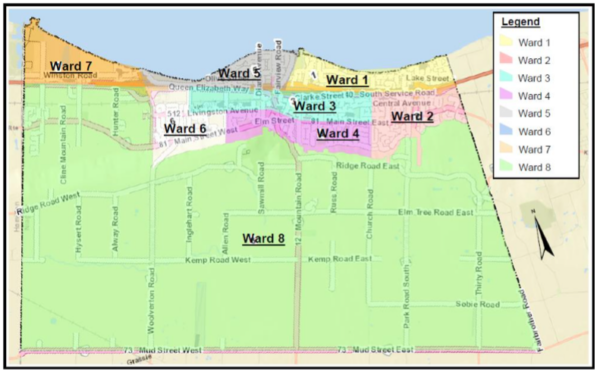 By Mike Williscraft
By Mike Williscraft
NewsNow
Despite Grimsby council receiving a report with more than a dozen options, a decision on possible new ward boundaries is still a ways off.
Council agreed to a special meeting (May 25) to narrow options which will then go back to the public for input.
The review has been considered one of council’s priorities due to the significant changes in the population within some of Grimsby’s ward boundaries.
Initially six draft options were presented to the public and “those six have multiplied into the many options that are before you,” said John Matheson, the consultant leading the review process.
Councils numbering seven or nine total members with some of those configurations having one or two councillors per ward were all part of those up options up for review during the public meetings and open for input.
In the end, “This (5B) is the one we liked the best. It tries to use the QEW. It achieves single ward representation for the escarpment. It has really nice mathematical parity,” Matheson told council, adding that much of the feedback received was that the Town was more about east-west communities, not far south ones.”
Many members of council noted the findings made sense, but while seeking to have a couple of other options included in future discussions it was noted more public input is needed since a low response rate was generated by an online survey on the topic.
“Twenty four is not a good representation from the community out of 30,000 people to make this decision,” said Coun. Dorothy Bothwell.
CAO Harry Schlange noted that – with a soft deadline of late June for a final decision – if new boundaries are to be in place for the 2022 municipal election – that the field needs to be narrowed to keep the process simple. The result would have a final deadline of late 2021, but the process must allow time for an LPAT appeal should one arise.
Coun. Reg Freake suggest a special meeting of council be set just for this boundary review to draw focus and expedite the matter.
Coun. Lianne Vardy supported that idea.
“I am not comfortable with us deciding something that is so important without getting the public’s input,” said Vardy.
With more than a dozen overall options included in the report, council members recognized the need to prioritize some possibilities before seeking public input prior to a final decision.
“We could certainly save time by having a survey with council of their options. That would narrow it down and we could get the public involved sooner than later,” said Mayor Jeff Jordan.
Council approved a motion that the clerk canvass members of council to survey their Top 3 favoured options, using those results to narrow a selection which was to be review at a special meeting of council Tuesday, May 25.
Top 3 Study Recommendations
When considering the preferred options within each category we find that even compared to other preferred options, Option 5B provides the best outcomes for effective representation and would continue the status quo of a Council of nine with 2 councillors per ward.

This variation of Option 5 was developed with the intent of fully leveraging Main St. as an effective ward boundary across the eastern side of the Town, and to improve overall population parity by moving the “Fifth Wheel” site into ward 1. An earlier iteration
without the “Fifth Wheel” correction, Option 5A, is available in Appendix D.
This option consists of 4 wards for a Council of 9, 2 councillors are elected per ward.
It has the following key strengths:
• the best outcomes in terms of population parity, both today as projected to 2030;
• the strongest outcomes for wards that reflect community of interest, and;
• the most readily explainable and easily understood geographic boundaries.
Option 2B would be the preferred 6-ward option in that it would provide similarly strong outcomes for wards that reflect community of interest, and mostly favourable and easily understood geographic boundaries. However, Option 2B does not deliver the same level of
population parity achieved by Option 5B today or as projected to 2030.

This variation of Option 2 was developed with the intent of reimagining the wards below the Escarpment, to make effective use of the QEW as an effective ward boundary and to maximize the extent to which the Escarpment ward excludes more urban residential areas below the Escarpment. An earlier iteration, Option 2A is available in Appendix D.
This option consists of 6 wards and would result in a Council of 7, where 1
councillor is elected per ward.
Option 1A would be the preferred 8-ward option in that it would provide similarly strong outcomes for wards that reflect community of interest, and mostly clean geographic boundaries. That being said, there are more boundaries to create in an 8-ward model which can result in less readily understood boundaries by the nature of dividing Grimsby into 8 distinct areas.

This variation of Option 1 was developed with the intent of fully leveraging the QEW as an effective ward boundary, and to eliminate as many boundary “anomalies” as possible, by only using obvious boundaries including roads and the Escarpment.
This option consists of 8 wards and would result in a Council of 9, where 1
councillor is elected per ward.
However, compared to Option 5B, Option 1A does not deliver the same level of population parity achieved by Option 5B either today or as projected to 2030. This would be true of all 8-ward options, because of the concentration of population in high growth areas, and the low density of population on the Escarpment.

